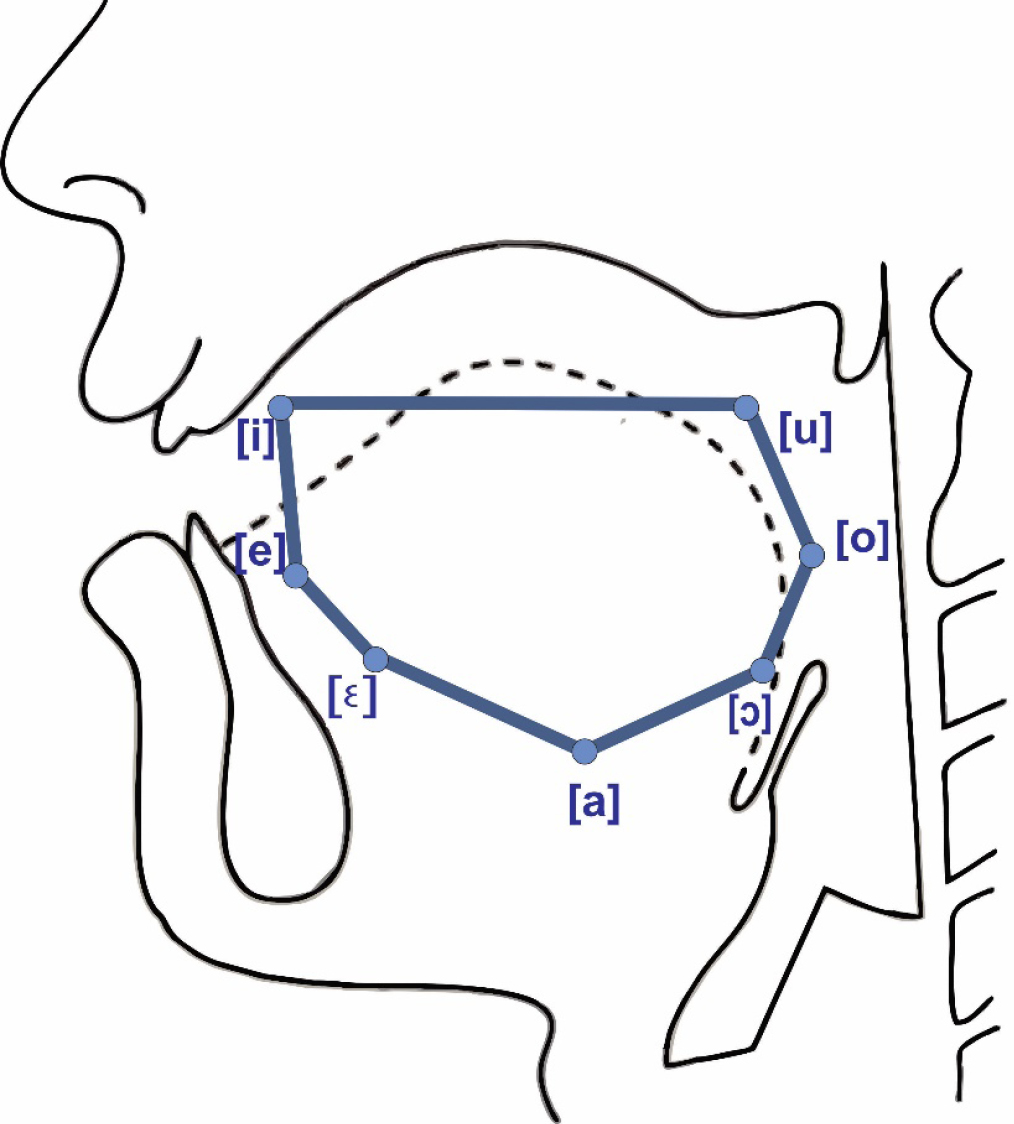A língua é composta por várias fibras que permitem move-la e posicioná-la para articular palavras. A posição da língua também irá influenciar o movimento do palato mole e a abertura da garganta essencial para Cantar.

“This complex arrangement of intrinsic fibers makes it possible to shorten the tongue, to form it into a convex or concave shape (with the tip of the tongue turned upward), to narrow and elongate the tongue, or the flatten and broaden it. In conjunction with the extrinsic muscles they move and position the tongue, this complex arrangement of fibers also makes it possible to form the sounds of speech.”
É muito importante ter a garganta relaxada para produzir som, conseguir arquear o palato mole e ter mais espaço na garganta principalmente no registo médio e agudo. Como tal, a língua acompanha o movimento do queixo na busca desse espaço. Por exemplo, quando cantamos um (a) devemos mantar a língua relaxada na base da boca, com a ponta da língua encostada aos dentes inferiores. Isto irá permitir muito espaço na boca e garganta.
“The correct position of the tongue is raised from the back, lying flat in the mouth, the flattened tip beneath the front teeth, with the sides slightly raised so as to form a slight furrow in it.”
“The position of the tongue is crucial for great sound, but it’s also central to swallowing – and the swallowing functions can sometimes influence speech in negative ways.”
As outras vogais (e; i; o; u) são moldadas em grande parte pela posição da língua, pois já é necessário um molde diferente da vogal (a) onde a língua se encontra na posição mais relaxada.

Figure 1:
Schematic representation of the position of oral vowels in the oral cavity, in the Brazilian Portuguese VIEGAS, F. et al. Comparison of fundamental frequency and formants frequency measurements in two speech tasks. Revista CEFAC, v. 21, n. 6, p. e12819, 2019.
“As you speak, your tongue is supposed to stay pretty much resting at the bottom part of your mouth, with the tip practically touching the back side of your bottom teeth. It can move slightly away from the teeth, but only slightly.”
A língua também possui um papel importante no ato de engolir, a parte de trás da língua empurra o alimento. Este movimento da língua ativa uma série de mecanismos como se dissemos ao cérebro que vamos engolir algo. Se o fizermos durante o canto é terrível o desconforto pois, estamos a apertar a garganta e a reduzir muito o espaço pelo qual o som deve sair. Perdemos completamente o controlo e o apoio do som.
“The extrinsic muscles make it possible to move the tongue as a whole, as in sucking or positioning food in mouth, and play an important role in the action of swallowing”
Devemos fazer exercícios com as vogais tentando manter o máximo de tempo a ponta da língua encostada aos dentes inferiores da frente.
